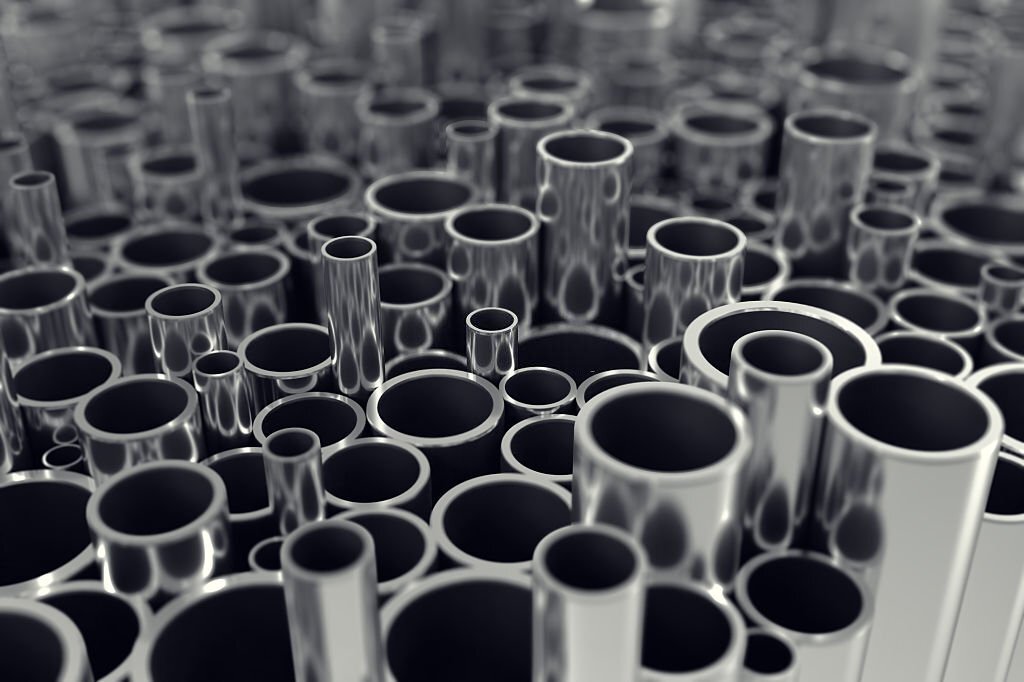Quick Inquiry
Corrosion poses a costly threat to businesses operating seamless pipes. Its detrimental effects not only lead to structural weaknesses but also cause significant financial losses. As a leading manufacturer of steel pipes in India, we recognise the importance of safeguarding these vital assets from Corrosion. To address this concern comprehensively, we present an extensive guide on protecting seamless pipes from corrosion, a challenge affecting numerous industries.

What Causes Corrosion in Seamless Pipes
Understanding the underlying causes of corrosion is the first step toward effective protection. Seamless pipes can corrode due to various factors, including:
Chemical Reactions
One of the primary culprits behind corrosion is the chemical reaction between the metal in the pipe and the surrounding environment. This reaction often occurs in the presence of moisture, oxygen, and certain corrosive substances. The Indian seamless pipe industry, therefore, emphasises material selection to minimise susceptibility to these reactions.
Electrochemical Reactions
Electrochemical reactions, such as galvanic corrosion, transpire when two dissimilar metals come into contact. This leads to the transfer of electrons and, subsequently, the corrosion of seamless pipes. Manufacturers can counter this by using alloys or coatings that mitigate these reactions.
Exposure to Harsh Environments
Seamless pipes in industries like oil and gas often face exposure to aggressive environments such as saltwater, acids, and alkaline substances. This hostile exposure accelerates corrosion. Employing corrosion-resistant alloys and coatings can be an effective preventive measure.
Abrasion
Mechanical damage to the protective coatings of pipes can expose the metal to corrosion. This damage often occurs during handling, transportation, and installation. Adhering to best practices for proper storage and handling can help prevent abrasion and corrosion.
Microbial Corrosion
In some cases, microorganisms like bacteria can colonise the surface of the pipes, releasing corrosive byproducts that damage the metal. Appropriate disinfection measures, regular inspections, and specialised coatings can address this concern.
Measures to Protect Seamless Pipes from Corrosion
Proper Material Selection
Choosing the suitable material for seamless pipes is of paramount importance. Stainless steel, due to its resistance to corrosion, and corrosion-resistant alloys are ideal for industries with a high corrosion risk. These materials offer long-lasting protection against the chemical reactions responsible for corrosion.
Protective Coatings
Applying anti-corrosion coatings to seamless pipes is a vital step. Epoxy, polyethylene, or fusion-bonded epoxy coatings create a formidable barrier between the metal and the surrounding environment. Regular inspections, maintenance, and reapplication of coatings are necessary to ensure their lasting effectiveness. Innovative nanocoatings can provide enhanced protection by creating ultra-thin, impermeable layers.
Cathodic Protection
Implementing a cathodic protection system involves connecting a sacrificial anode, usually made of materials like aluminium or zinc, to the seamless pipe. This anode corrodes instead of the pipe, effectively preventing corrosion. This method is highly effective in protecting buried pipelines and underwater structures, such as those used in offshore oil and gas operations.
Regular Inspection and Maintenance
Regular inspections are the cornerstone of corrosion prevention. These inspections should encompass a range of methods, including visual assessments, corrosion monitoring using techniques like ultrasonic thickness measurement, and non-destructive testing methods like radiography. Timely maintenance and repairs and a robust preventive maintenance plan can prevent further damage.
Corrosion Inhibitors
Chemical corrosion inhibitors can be injected into the pipelines to create a protective film on the inner surface of the seamless pipes. This film acts as a barrier between the metal and corrosive substances, effectively mitigating the electrochemical reactions that lead to corrosion. Advanced inhibitor formulations can offer extended protection, even in the harshest environments.
Proper Storage and Handling
Proper storage and handling practices are essential to prevent mechanical damage and corrosion during transportation and installation. Pipes should be stored in a dry environment, and handling should be carried out with utmost care to avoid scratches, dents, or damage to protective coatings. Employing innovative handling equipment, such as anti-corrosion cradles, can further enhance protection.
Regular Cleaning
Keeping the external surface of seamless pipes clean is vital to prevent the accumulation of corrosive substances. This is especially important in industries where pipes are exposed to aggressive environments. Using specialised cleaning equipment and procedures can maintain the integrity of the protective coatings.
Environmentally Controlled Atmospheres
In some instances, controlling the environment surrounding the pipes can be an effective measure. Industries can implement controlled atmospheres, like nitrogen purging, that reduce humidity and oxygen levels, inhibiting corrosion. This approach is particularly relevant in sectors such as electronics manufacturing, where even trace levels of corrosion can be detrimental.
Isolation and Insulation
For seamless pipes exposed to extremely corrosive materials or conditions, isolation, and insulation offer an effective solution. By isolating the pipes from direct contact with corrosive substances and insulating them, businesses can ensure long-lasting protection. This approach is commonly employed in chemical processing plants and the petrochemical industry.
Proper Design
The design of seamless pipe systems plays a significant role in preventing corrosion. Factors like adequate drainage to prevent water pooling, avoiding water traps, and ensuring that pipes are not in direct contact with the ground are crucial design considerations. Incorporating corrosion-resistant materials and coatings into the initial design is equally important.
Quality Assurance
Ensuring the quality of seamless pipes from the outset is paramount. Businesses should partner with trusted, reliable steel pipe manufacturers in India that adhere to stringent quality control measures to produce corrosion-resistant pipes. Conducting audits, quality checks, and certifications can further guarantee the reliability of the materials.
Corrosion Monitoring Systems
Implementing corrosion monitoring systems equipped with sensors and data analysis capabilities provides real-time information on the condition of seamless pipes. This proactive approach enables early detection and timely intervention, reducing the overall cost of corrosion prevention. Advanced technology like IoT-based monitoring can enhance the effectiveness of these systems.
Training and Education
Proper training of personnel who handle and maintain seamless pipes is vital. Employees should be educated about corrosion risks and trained to respond to potential issues. A knowledgeable workforce is an invaluable asset in the fight against corrosion.
The Right Way to Store Seamless Pipes
Proper storage of seamless pipes is critical to ensure their long-term durability and resistance to corrosion. Businesses operating seamless steel pipes understand the significance of preserving the integrity of these essential assets. Here are key points to follow for effective storage:
Dry and Covered Storage
Storing seamless pipes in a dry, covered area is fundamental. Exposing them to moisture and the elements can lead to surface corrosion and degradation. Utilise warehouses or covered storage yards to shield the pipes from rain, humidity, and direct sunlight.
Adequate Elevation
Elevating pipes off the ground is crucial to prevent contact with moisture or soil. Using pipe cradles, wooden supports, or specially designed racks can maintain a buffer between the pipes and the ground. This measure is vital for preventing corrosion in steel seamless pipes, which are more prone to rust.
Ventilation
Ensure proper ventilation in storage areas. Good air circulation helps maintain a stable environment and reduces the risk of condensation. This is especially important for preventing internal corrosion, which can result from moisture accumulation within the pipe.
Categorisation and Labeling
Categorise and label seamless pipes based on material type, size, and specifications. This organisation simplifies retrieval and minimises handling, which can inadvertently cause damage.
Protection from Physical Damage
Implement protective measures to prevent physical damage during storage. This includes using appropriate padding or cushioning between pipes and securing them with straps or bands to avoid accidental rolling or falling.
Regular Inspection
Periodically inspect stored seamless pipes for signs of damage or corrosion. Early detection can prevent minor issues from developing into major problems. Corrosion-resistant coatings, if applied, should be examined for integrity and effectiveness.
Handling Equipment
Employ specialised handling equipment like forklifts or cranes to move and stack pipes. This minimises the risk of damage during the handling process, ensuring the pipes remain in optimal condition.
Rotation
Practice the “first in, first out” principle, ensuring that older pipes are used before newer ones. This rotation helps maintain pipe quality by preventing the prolonged storage of pipes that may have been exposed to conditions that can lead to corrosion.
Prevent Contamination
Keep storage areas clean and free from contaminants. Dust, chemicals, or other substances can lead to corrosion or surface damage when in contact with the pipes.
Safety Measures
Implement safety measures to protect personnel working in the storage area. This includes safety training, the use of personal protective equipment, and clear signage indicating restricted areas.
Invest in the Best Quality Cold-Drawn Seamless Tubes
Invest in the future of your operations by choosing the best quality cold-drawn seamless tubes and pipes from Anand Seamless Ltd. Our commitment to excellence ensures that you receive cutting-edge pipes and tubes that are durable and resistant to corrosion, stress, and wear. When you invest in our products, you invest in reliability, longevity, and peace of mind.
With a proven track record of providing top-tier seamless pipes, we are your trusted partner for meeting the unique demands of your industry. Whether you’re in construction, oil and gas, or any other sector that relies on seamless pipes and tubes, our products are designed to exceed your expectations.
Contact us at inquiry@anandseamless.com or call us at +91-9099996851 to discover the seamless difference. Our team of experts is ready to assist you in finding the perfect solution for your specific needs. Your success is our priority, and we are here to make sure you have the best seamless pipes to achieve it. Invest wisely.
lATEST BLOG |
|
How to Choose Right Grade Carbon Steel Seamless Tubes
Carbon steel seamless tubes are essential componen |
|
Basics of Aluminum Finned Tubes
In the world of heat exchange technology, aluminiu |
|
How to Enhance Mechanical Tubes for Various Applications
Mechanical tubes form the backbone of various indu |
|
Why Are U-Tube Heat Exchangers Undeniably Vital: A Complete Guide
In the landscape of industrial heat exchange syste |
|
Introductory Guide to Economizer Tubes
In the dynamic landscape of industrial operations, |



